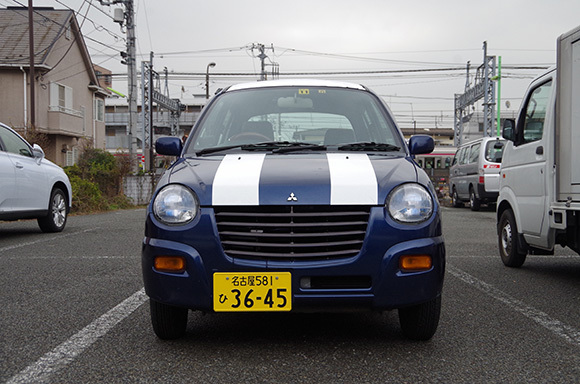
Some of you may remember the fateful day last spring when our Japanese-language reporter Go bought what was probably the cheapest car in Japan by acquiring his current ride for just 980 yen (US $8.30). Nine months later, not only is his 1997 Mitsubishi Minica still firing on all three cylinders under its hood, but it recently passed its mandatory biennial safety inspection, called shaken in Japanese.
In celebration, Go treated the Minica to a wash for the first time since he drove it back to Tokyo from Nagoya. With a fresh coat of wax, it was looking better than ever, but Go still wasn’t 100-percent satisfied with the car’s appearance. See, Go believes the Mini is just an overall cooler car than the Minica, so he set out to transform the latter into the former using the finest vinyl sheets and magic markers he could find.
While some might call trying to add a dash of stylishness to an ultra-compact that’s already more than 15 years old a waste of time, Go insists his Minica is a diamond in the rough. Like his own gasoline-powered Cinderella, all it needs is a few cosmetic touch-ups to bring out its true beauty. Enlisting the help of gal pal Debuneko, Go drove his car to a parking lot in Tokyo where the pair got to work.
Due to the bond he’s developed with the vehicle over the past year, Go could tell the Minica was nervous. So, before getting started, he went over the three parts of his dress-up tuning project:
1. Make the roof white
2. Add white racing stripes to the hood
3. Black out the grille
▼ Basically this
Figuring he’d put the machine’s mind at ease, Go and Debuneko whipped out one of the vinyl sheets and started covering the roof, just as they’d planned. What they hadn’t intended to do, though, was to also add an almost infinite number of wrinkles and air bubbles to the sheet’s surface.
▼ Not part of the plan
Instead of the roof of a youthfully hip, British-inspired, German-engineered runabout, it was starting to look like a patch of geriatric, shriveling skin…that had been attacked by mosquitos. With Debuneko chastising him for his sloppiness, Go peeled the sheet off and reapplied it…and then gave it a third try, still ending up with less-than-smooth results.
▼ Artist’s rendition of Go grumbling, “This is not good…” with the poor, worried Minica asking, “What’s not good? What?!”
With it becoming clear that there was no way the pair was going to eliminate every air pocket from under the wrapping, Go hit upon the solution of just slapping the sheet on the roof, using a box cutter to pop any bubbles, and placing another piece of camouflaging vinyl over that. Once that was done, it was time to move on to the hood.
Compared to the roof, Go figured this would be a snap. After all, they’d be working with a shorter distance, smaller area, and less pronounced curvature to the sheet metal. Piece of cake, right?
▼ Wrong
Once again, this proved to be trickier than he’d imagined, with the first attempt once again ending with wrinkles, air bubbles, and cracking. At one point, it was bad enough that Go half-expected the Minica to go pale with fright and embarrassment, but trooper that it is (and being made of painted metal instead of flesh), the car remained, as ever, in its deep blue hue.
▼ Looking better
▼ Roof coloring and stripes finished, Go remarks, “Eh, good enough,” to which the Minica retorts “Like hell…”
Now entering the final stage of the project, Debuneko was thoroughly convinced of Go’s lack of aptitude for this kind of work. Armed with this knowledge, she volunteered to handle blacking out the grille entirely on her own, leaving Go’s hands free to photograph the process.
In all honesty, it would have been easier to use spray paint than oil-based markers. However, most public parking lots frown on customers blasting away with spray cans on the premises, and if you’re the kind of guy who buys a 980-yen car, it goes without saying that you’re not the kind of guy who’s going to rent a dedicated auto garage space for the day in which to do your cosmetic modifications.
For the Minica-to-Mini project, Go decided to use Magic Inky markers. It’s important to pick out a single brand and stock up ahead of time, since even if they’re all listed as “black,” the difference in shade between one company’s products and another’s will show up when you use them both on the same part of the car.
So, how does the Minica look after its three-part makeover?
Actually, not half-bad, considering the almost complete lack of preparation, specialized skill, or financial outlay that went into it.
It’s even more impressive when you consider that Go and Debuneko only spent 30 minutes on the whole thing. And just in case you think it only looks passable because of the shadowy surroundings obscuring glaring flaws, here’s the Minica in the light of day.
▼ This is probably its best angle.
▼ Meanwhile, in profile, it looks almost exactly the same as it did before.
So in the end, did Go achieve his goal of making something that could pass for a Mini if you just caught a quick glimpse of it buzzing by in traffic? Maybe, maybe not. But between the wash and new look, it’s about twice as cool as it was before, and given its low sticker price, has probably also doubled in value.
Photos: RocketNews24
[ Read in Japanese ]

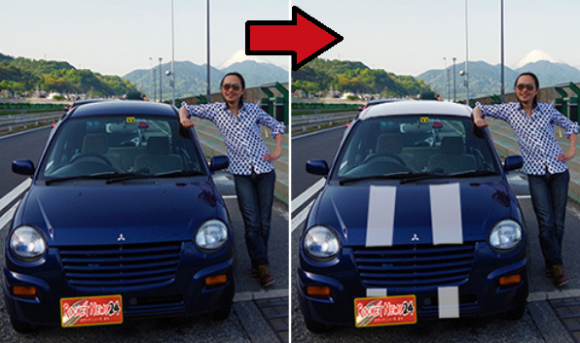
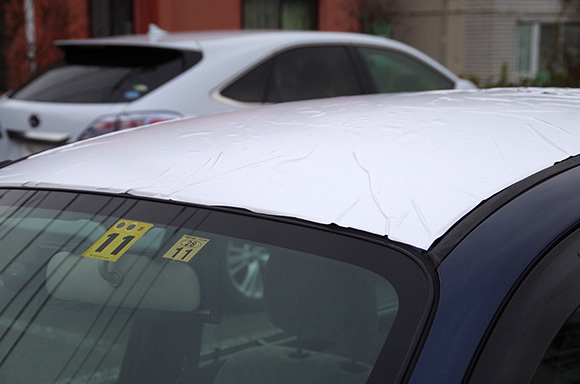
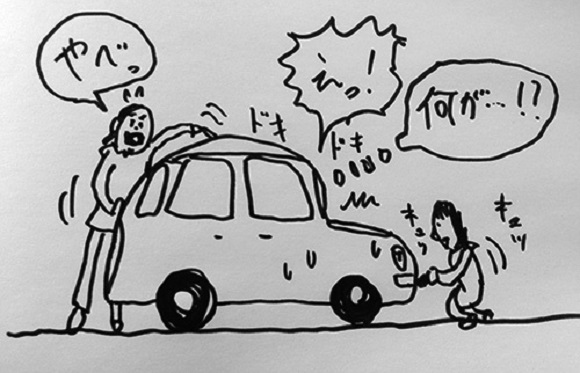
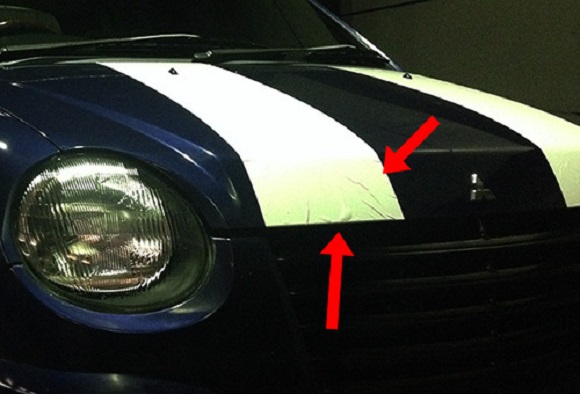
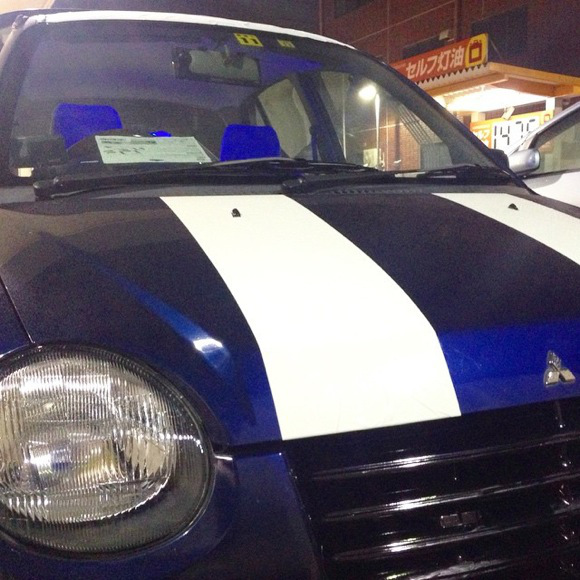
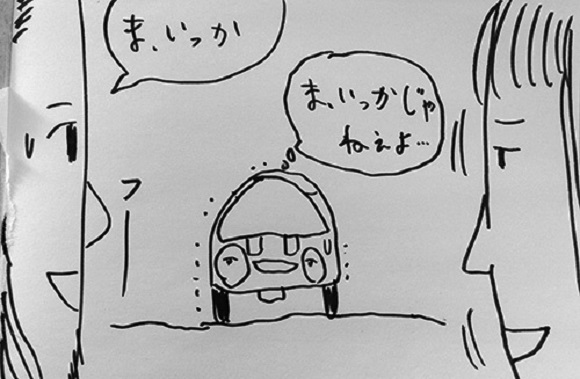
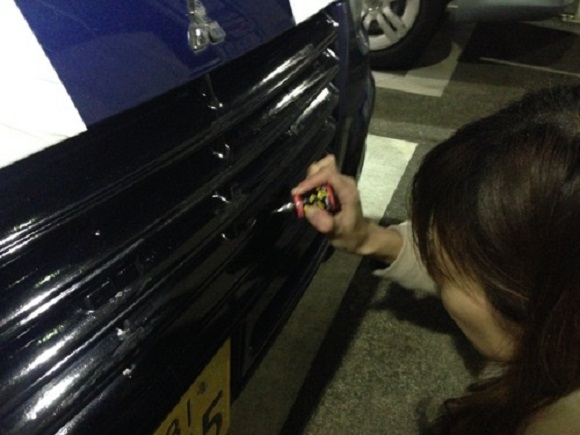

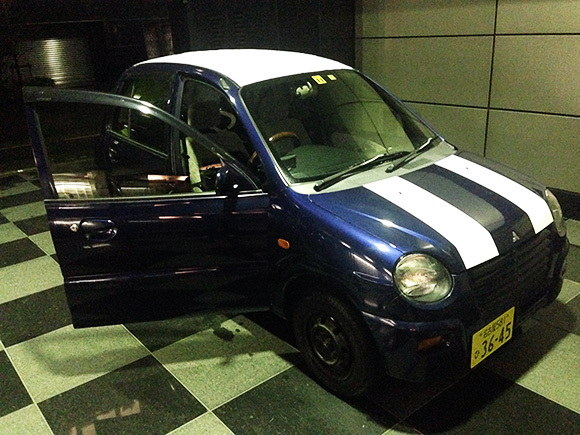
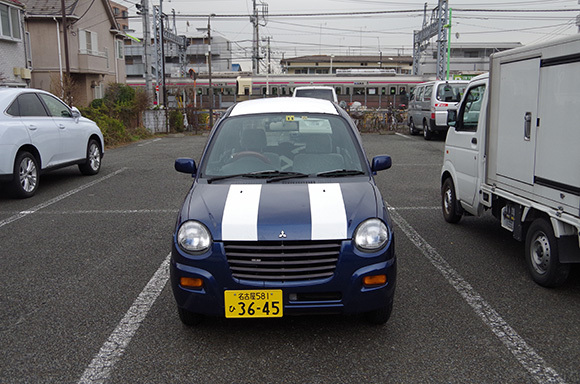
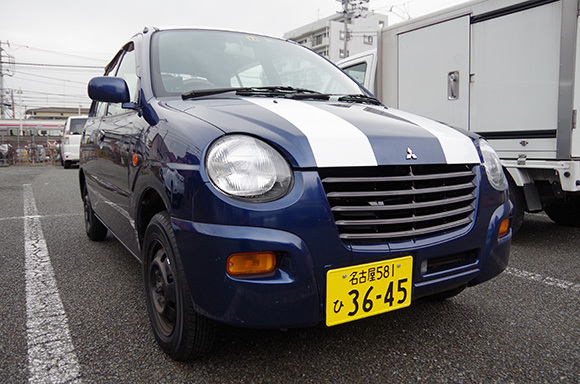
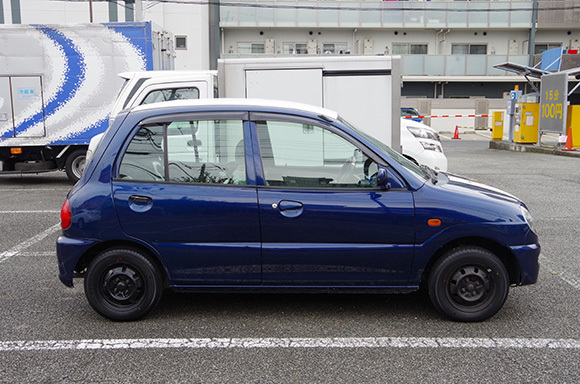
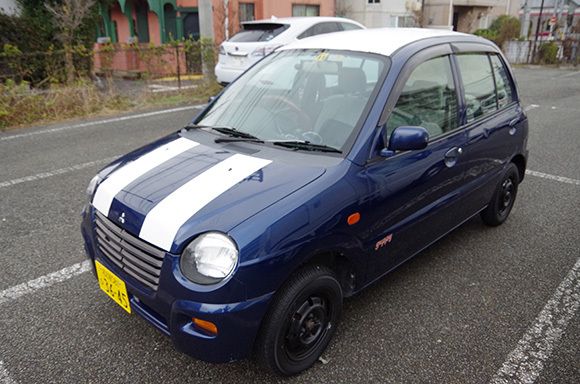
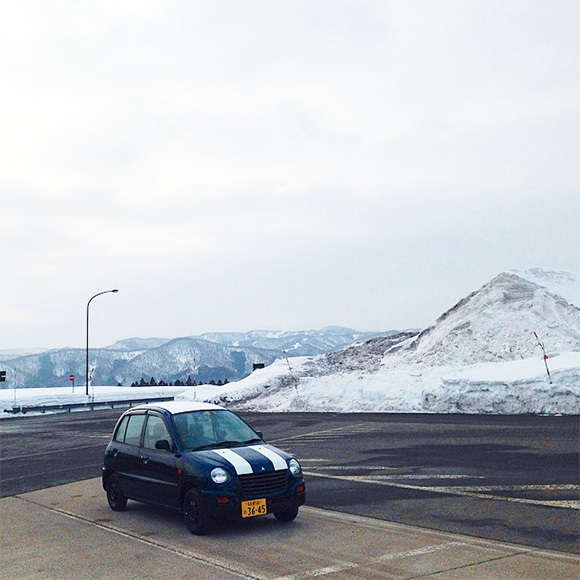
 We cook a monjayaki Japanese pancake on the hood of a car during Japan’s hottest summer ever【Vid】
We cook a monjayaki Japanese pancake on the hood of a car during Japan’s hottest summer ever【Vid】 Uniqlo’s amazing new bedsheets are hallucinatingly comfortable
Uniqlo’s amazing new bedsheets are hallucinatingly comfortable We try cooling our face masks five different ways, and don’t recommend doing any of them
We try cooling our face masks five different ways, and don’t recommend doing any of them Daiso’s Silicone Moisturizing Mask hydrates your face the smart way
Daiso’s Silicone Moisturizing Mask hydrates your face the smart way Typhoon Jebi hits too close to home, wreaks havoc on my Osaka neighborhood【Videos】
Typhoon Jebi hits too close to home, wreaks havoc on my Osaka neighborhood【Videos】 McDonald’s new Happy Meals offer up cute and practical Sanrio lifestyle goods
McDonald’s new Happy Meals offer up cute and practical Sanrio lifestyle goods All-you-can-drink Starbucks and amazing views part of Tokyo’s new 170 meter-high sky lounge
All-you-can-drink Starbucks and amazing views part of Tokyo’s new 170 meter-high sky lounge Studio Ghibli glasses cases let anime characters keep an eye on your spectacles
Studio Ghibli glasses cases let anime characters keep an eye on your spectacles McDonald’s Japan releases a pancake pie for new retro kissaten coffeeshop series
McDonald’s Japan releases a pancake pie for new retro kissaten coffeeshop series Super Nintendo World expansion gets delayed for several months at Universal Studios Japan
Super Nintendo World expansion gets delayed for several months at Universal Studios Japan Haku is…Chihiro’s dead brother? Studio Ghibli fans blown away by Spirited Away theory
Haku is…Chihiro’s dead brother? Studio Ghibli fans blown away by Spirited Away theory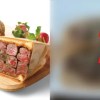 Is Japan’s massive Shizuoka steak sandwich really as delicious as it looks in promo photos?
Is Japan’s massive Shizuoka steak sandwich really as delicious as it looks in promo photos? We try out “Chan Ramen”, an underground type of ramen popular in the ramen community
We try out “Chan Ramen”, an underground type of ramen popular in the ramen community Kyoto’s 100 Demons yokai monster parade returns!
Kyoto’s 100 Demons yokai monster parade returns! Video proves 19th century samurai and Japanese ladies have elegance all wrapped up
Video proves 19th century samurai and Japanese ladies have elegance all wrapped up Disney princesses get official manga makeovers for Manga Princess Cafe opening in Tokyo
Disney princesses get official manga makeovers for Manga Princess Cafe opening in Tokyo More foreign tourists than ever before in history visited Japan last month
More foreign tourists than ever before in history visited Japan last month Starbucks reopens at Shibuya Scramble Crossing with new look and design concept
Starbucks reopens at Shibuya Scramble Crossing with new look and design concept Beautiful new Final Fantasy T-shirt collection on the way from Uniqlo【Photos】
Beautiful new Final Fantasy T-shirt collection on the way from Uniqlo【Photos】 Is the new Shinkansen Train Desk ticket worth it?
Is the new Shinkansen Train Desk ticket worth it? Foreign English teachers in Japan pick their favorite Japanese-language phrases【Survey】
Foreign English teachers in Japan pick their favorite Japanese-language phrases【Survey】 Japanese convenience store packs a whole bento into an onigiri rice ball
Japanese convenience store packs a whole bento into an onigiri rice ball Studio Ghibli releases Kiki’s Delivery Service chocolate cake pouches in Japan
Studio Ghibli releases Kiki’s Delivery Service chocolate cake pouches in Japan Japan’s bone-breaking and record-breaking roller coaster is permanently shutting down
Japan’s bone-breaking and record-breaking roller coaster is permanently shutting down New definition of “Japanese whiskey” goes into effect to prevent fakes from fooling overseas buyers
New definition of “Japanese whiskey” goes into effect to prevent fakes from fooling overseas buyers Our Japanese reporter visits Costco in the U.S., finds super American and very Japanese things
Our Japanese reporter visits Costco in the U.S., finds super American and very Japanese things Studio Ghibli unveils Mother’s Day gift set that captures the love in My Neighbour Totoro
Studio Ghibli unveils Mother’s Day gift set that captures the love in My Neighbour Totoro Foreign passenger shoves conductor on one of the last full runs for Japan’s Thunderbird train
Foreign passenger shoves conductor on one of the last full runs for Japan’s Thunderbird train Domino’s Japan now sells…pizza ears?
Domino’s Japan now sells…pizza ears? New Japanese KitKat flavour stars Sanrio characters, including Hello Kitty
New Japanese KitKat flavour stars Sanrio characters, including Hello Kitty Kyoto creates new for-tourist buses to address overtourism with higher prices, faster rides
Kyoto creates new for-tourist buses to address overtourism with higher prices, faster rides Sales of Japan’s most convenient train ticket/shopping payment cards suspended indefinitely
Sales of Japan’s most convenient train ticket/shopping payment cards suspended indefinitely Sold-out Studio Ghibli desktop humidifiers are back so Totoro can help you through the dry season
Sold-out Studio Ghibli desktop humidifiers are back so Totoro can help you through the dry season Japanese government to make first change to romanization spelling rules since the 1950s
Japanese government to make first change to romanization spelling rules since the 1950s Ghibli founders Toshio Suzuki and Hayao Miyazaki contribute to Japanese whisky Totoro label design
Ghibli founders Toshio Suzuki and Hayao Miyazaki contribute to Japanese whisky Totoro label design Doraemon found buried at sea as scene from 1993 anime becomes real life【Photos】
Doraemon found buried at sea as scene from 1993 anime becomes real life【Photos】 Tokyo’s most famous Starbucks is closed
Tokyo’s most famous Starbucks is closed One Piece characters’ nationalities revealed, but fans have mixed opinions
One Piece characters’ nationalities revealed, but fans have mixed opinions We asked a Uniqlo employee what four things we should buy and their suggestions didn’t disappoint
We asked a Uniqlo employee what four things we should buy and their suggestions didn’t disappoint Princesses, fruits, and blacksmiths: Study reveals the 30 most unusual family names in Japan
Princesses, fruits, and blacksmiths: Study reveals the 30 most unusual family names in Japan 100-yen store Daiso teaches us how to make our own cloth face masks
100-yen store Daiso teaches us how to make our own cloth face masks Extreme budget travel! Can you do a good weekend trip to Taiwan with 50,000 yen (US$370)? – Part 2
Extreme budget travel! Can you do a good weekend trip to Taiwan with 50,000 yen (US$370)? – Part 2 44 bubble machines on the roof of a Japanese country house is our idea of renovating【Video】
44 bubble machines on the roof of a Japanese country house is our idea of renovating【Video】 Solar Chef: We tried cooking an egg using the power of the sun and a magnifying glass
Solar Chef: We tried cooking an egg using the power of the sun and a magnifying glass Limited-edition Batman Ninja figure is the epitome of stealth, justice and awesomeness
Limited-edition Batman Ninja figure is the epitome of stealth, justice and awesomeness Can even our brown thumbs keep this “moss bonsai” kit alive?【Photos】
Can even our brown thumbs keep this “moss bonsai” kit alive?【Photos】 Vinyl flower vases are all the rage right now in Japan
Vinyl flower vases are all the rage right now in Japan How to make a massive five-layer lasagna…in your rice cooker【SoraKitchen】
How to make a massive five-layer lasagna…in your rice cooker【SoraKitchen】 What to buy at Daiso’s new Standard Products store in Tokyo
What to buy at Daiso’s new Standard Products store in Tokyo A visit to one of Japan’s motorcycle Shinto shrines
A visit to one of Japan’s motorcycle Shinto shrines Tearing down the ceiling at our cheap Japanese house in the countryside【SoraHouse】
Tearing down the ceiling at our cheap Japanese house in the countryside【SoraHouse】 This “revolutionary” Japanese compression bottle is our 100-yen shop find of the week【Video】
This “revolutionary” Japanese compression bottle is our 100-yen shop find of the week【Video】 Turning a crazy cheap country Japanese house into a home — Step 9: Chestnuts【SoraHouse】
Turning a crazy cheap country Japanese house into a home — Step 9: Chestnuts【SoraHouse】 Testing Japan’s gacha capsule toy calligraphy brushes – tranquility for just 200 yen【Photos】
Testing Japan’s gacha capsule toy calligraphy brushes – tranquility for just 200 yen【Photos】 Beautiful booth models and tasty chow – A non-car guide to the Tokyo Motor Show【Photos】
Beautiful booth models and tasty chow – A non-car guide to the Tokyo Motor Show【Photos】
Leave a Reply